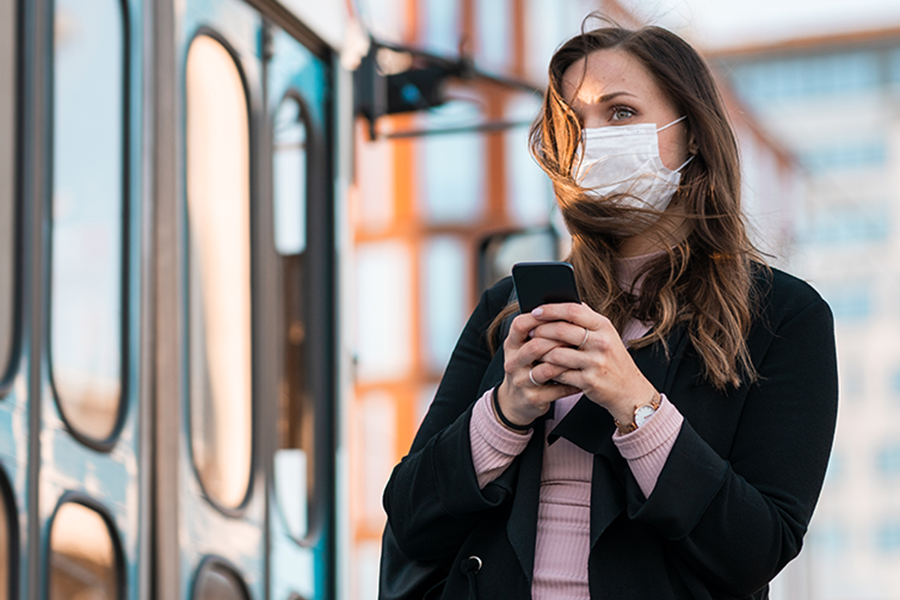
COVID-19’s impact on mental health and returning to the workplace
Many changes and challenges have come about because of COVID-19. And while we are still discovering the considerable impact this virus can have on physical health, there is as much to learn about its impact on mental health—both in the short term as well as in the months and years to come. Preliminary evidence suggests that psychological distress will be an outcome of the pandemic, with 16–28 per cent of persons experiencing symptoms of anxiety and depression.
While fears around health and money add layers of uncertainty, we should also consider the effects of quarantine. In March, Prime Minister Justin Trudeau told Canadians, “You can serve your country by staying home.” And most Canadians complied, doing so with little knowledge of how it might affect their mental health.
A study published in The Lancet looked at the impacts of quarantine on individuals and found adverse psychological effects—including reports of post-traumatic stress symptoms, confusion, and anger. Stressors included longer quarantine duration, infection fears, frustration, boredom, inadequate supplies, inconsistent information, financial loss, and stigma.
Studies also suggested that Canadians are using alcohol as a coping mechanism during this outbreak. The Canadian Centre on Substance Use and Addiction released a report looking at potential risks from alcohol and cannabis use during the COVID-19 pandemic. Canadians between the ages of 18 and 54 reported that their alcohol consumption increased by 21–25 per cent as social distancing and self-isolation public health practices were implemented.
What must organizations consider as they prepare to return to the workplace?
As Canadian organizations begin to plan their returns to the workplace, employers need to be prepared to support mental health as well as employee safety and physical health. When managing a crisis like COVID-19, it may be helpful to reflect on where you are in the crisis response process. (See exhibit.) Many lessons can be learned from previous disasters, and the model from Beverley Raphael’s book When Disaster Strikes: How Individuals and Communities Cope with Catastrophe may provide a helpful visual reference for employers. This type of model provides a guidepost for the kinds of interventions that should be considered when implementing a mental health return to the workplace plan.
Emotional phases of a disaster: Collective reactions
Source: U.S. Department of Health and Human Services, Substance Abuse and Mental Health Services Administration.
Some workers may have adjusted to their new ways of living and working during COVID-19. Yet others may be tired and frustrated and want to return to some form of normal. However, Canadians will not return to “normal” even as we start to phase in our return to the workplace. We need to consider the fact that we are somewhere between the “honeymoon” phase and starting down the dip of the “disillusionment” phase. Until there is a vaccine or treatment, we will continue to be at risk of future waves.
Prevention First
Every organization in Canada needs to pause and think carefully about what they have in place to support their employees’ mental health. Employee and family assistance programs are wonderful supports for workers, but they are not enough. Organizations must consider prevention as well as reacting to pain.
A Mental Health Commission of Canada and Nanos Research poll conducted in April reported a decline in the average Canadian’s mental health, which highlights the importance of focusing on prevention. Nearly 40 percent of poll participants stated that their mental health is worse or somewhat worse than before COVID-19.
If you stopped the average person on the street eight weeks ago and asked them what PPE is, they probably would not have had a clue. Now there is a broader understanding of the necessity of personal protective equipment and how it contributes to the health and safety of workers and the sustainability of organizations. As we move forward through this crisis, we will all need to learn the importance of mental health prevention and how to proactively protect employee mental health and well-being. In other words, we need mental health personal protective equipment (MHPPE).
Employers can take proactive, preventive steps to help employees as we move through the COVID-19 crisis. Here are five things you can do to support employee mental health:
- Provide mental health personal protective equipment (MHPPE)—Allow employees to develop mental fitness. Build resiliency programs that support mental health.
- Scan your workplace environment—Evaluate what you are doing to support employees’ psychological health and safety. Employers’ behaviours and actions can positively or negatively impact employees’ mental health.
- Provide peer support—Consider launching formal workplace peer support programs with the required levels of rigour (policy framework, selection, training, supervision) and encourage employees to step up and support colleagues.
- Take an employee psychological support inventory—Catalogue all of your programs that support employee mental health and evaluate their impact, as well as employees’ knowledge of them.
- Monitor mental health —Ensure you are monitoring mental health on an ongoing basis. And select tools that can measure employees’ mental fitness, psychological safety, employee experience, program impact, lifestyle choices, and productivity.
As the pandemic persists, its impact will likely continue to challenge employees’ mental health. What employers do today to help their employees prevent mental harms and promote mental health has the potential to help curb mental illness in the future.




